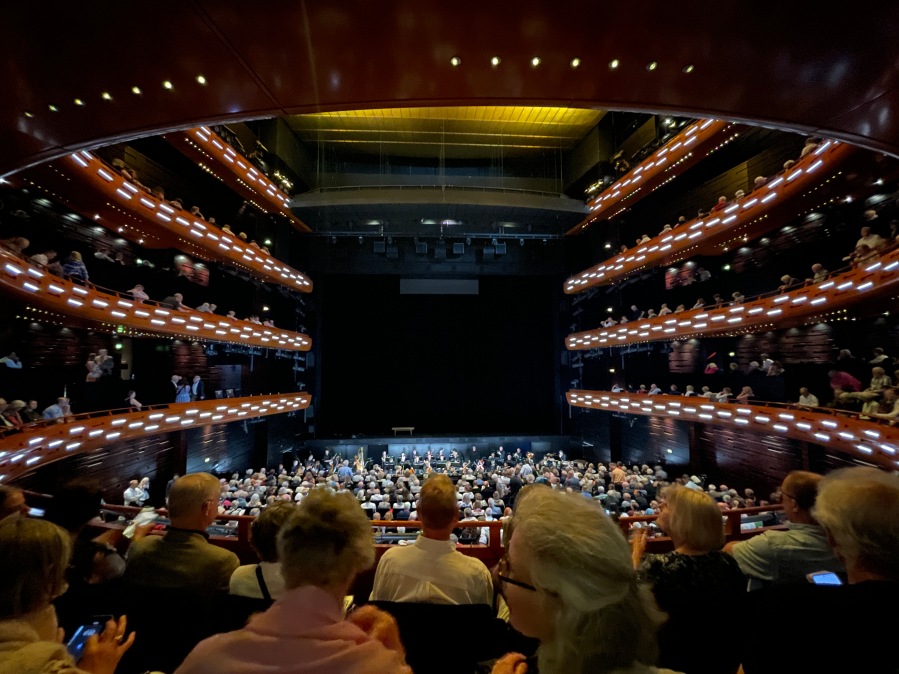The Royal Danish Orchestra / The Royal Danish Opera Chorus / Creatives and Cast
- Richard Wagner, Tristan und Isolde
This is the third version of Tristan and Isolde made for the current Copenhagen Opera House. There’s a frugality to Sofia Jupither’s production and in particular Erlend Birkeland’s design for this latest iteration. This is in contrast to Stig Andersen’s earliest version (2009) which I’m informed was too unwieldy even for this venue, one of the world’s best-equipped opera theatres.
The action is mostly confined to a 10m by 10m moving floor: in Act I bobbing around like a ship, in Act II a steeply sloped forest floor, before disappearing into a flat floor in Act III. It is paired with a flown array of lights (in the spirit of Kanye at Glastonbury) that acts as a rippling, glowing soffit in the first two acts before pivoting to a backdrop in the final act, becoming an array of blinding light for Isolde’s Liebestod. Light is a key motif of this work.
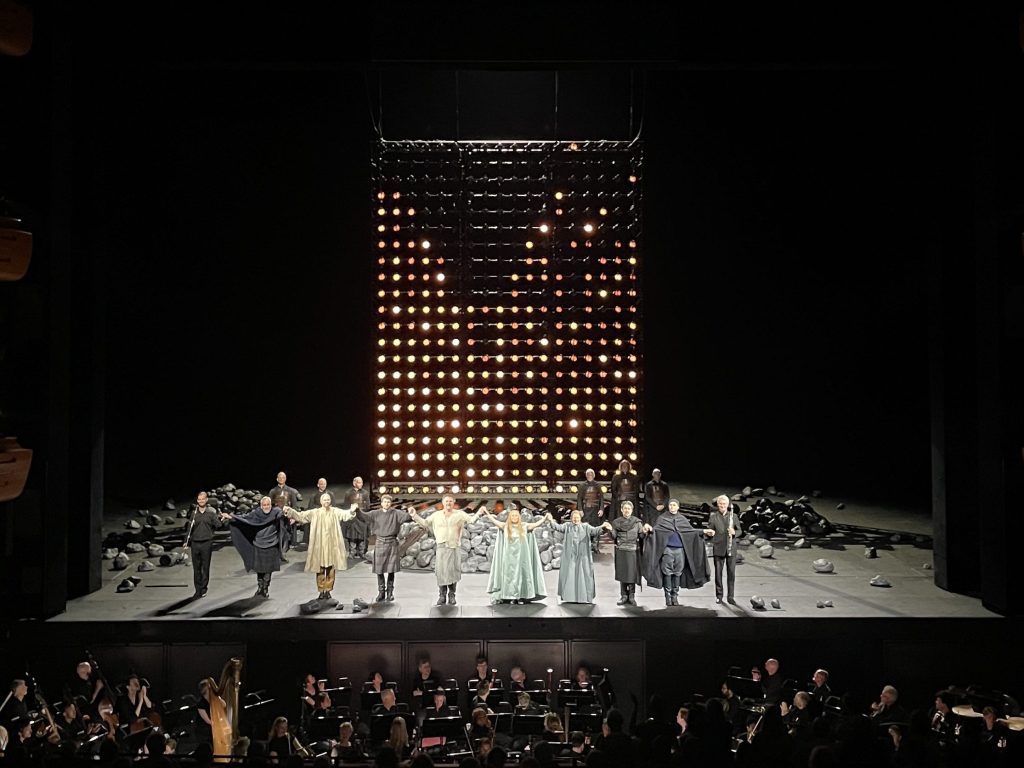
The orchestra (approx 75 musicians) were arranged in a flat-floor open pit, approximately 2m below stage level. From my seat, roughly centre on the first balcony, I had a great view of most of the orchestra, with just a few strings hidden behind the pit rail. The openness of this pit is an opposite philosophy to the hidden pit that Wagner pioneered – but it sounded great. The flatness and shallowness of the pit meant that visually the orchestra looked like part of the audience. It heightened the shared experience, the sense of occasion, it made the orchestra feel very connected to the audience, and bridged that gap in front of the stage that often feels quite a barrier in opera houses. It was nice to be able to see the musicians at work so clearly throughout the show.
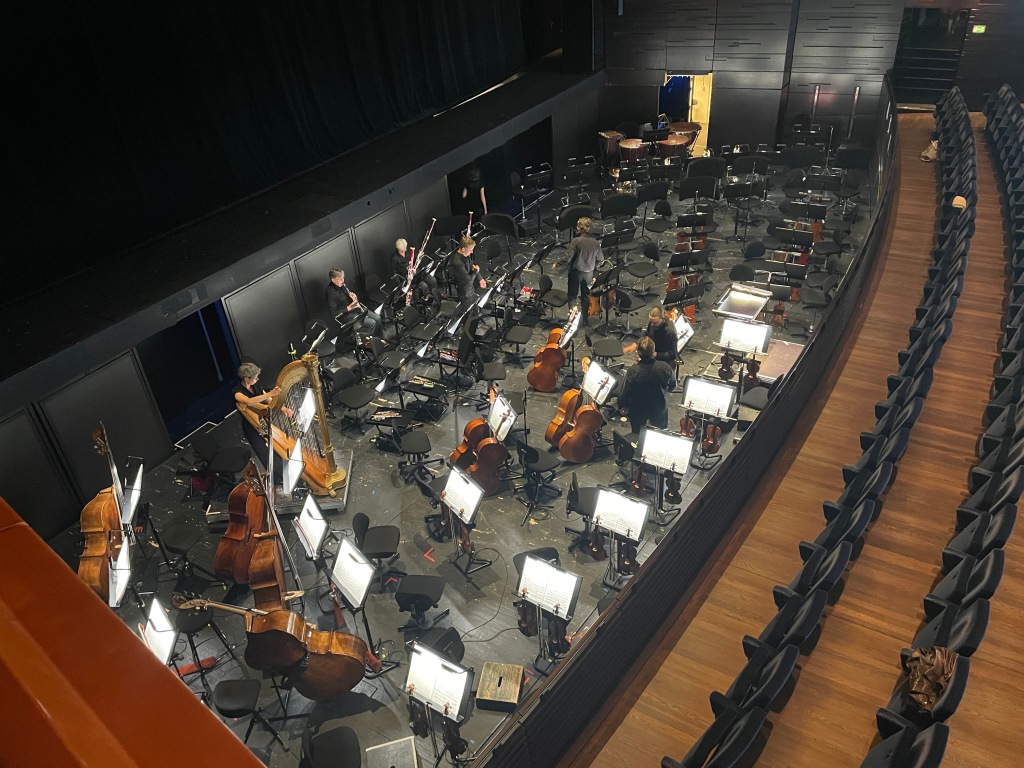
The orchestra sound had a nice balance with a clear spatial image, with the sound from the lower-middle registers (bass clarinet, horns, celli) in particular hanging sweetly in the air. The pit sound was stronger than the singers during the most forte phrases, in a way that might once have been a hindrance to comprehension but matters less since the ubiquity of surtitles. Brangäne and Isolde were stronger than the male parts. All the singers were a little stronger when downstage of the proscenium.
The sound was enveloping with a healthy tail of reverberance. The late energy sounded somewhat separated from the early decay, noticeable at the end of phrases – perhaps this reverberance was more pronounced than usual because of the relatively bare staging, and therefore empty stagetower. In the fleeting silent moments (in those rare instants between the music where the audience was not spluttering) there was audible fan noise from the theatre equipment.
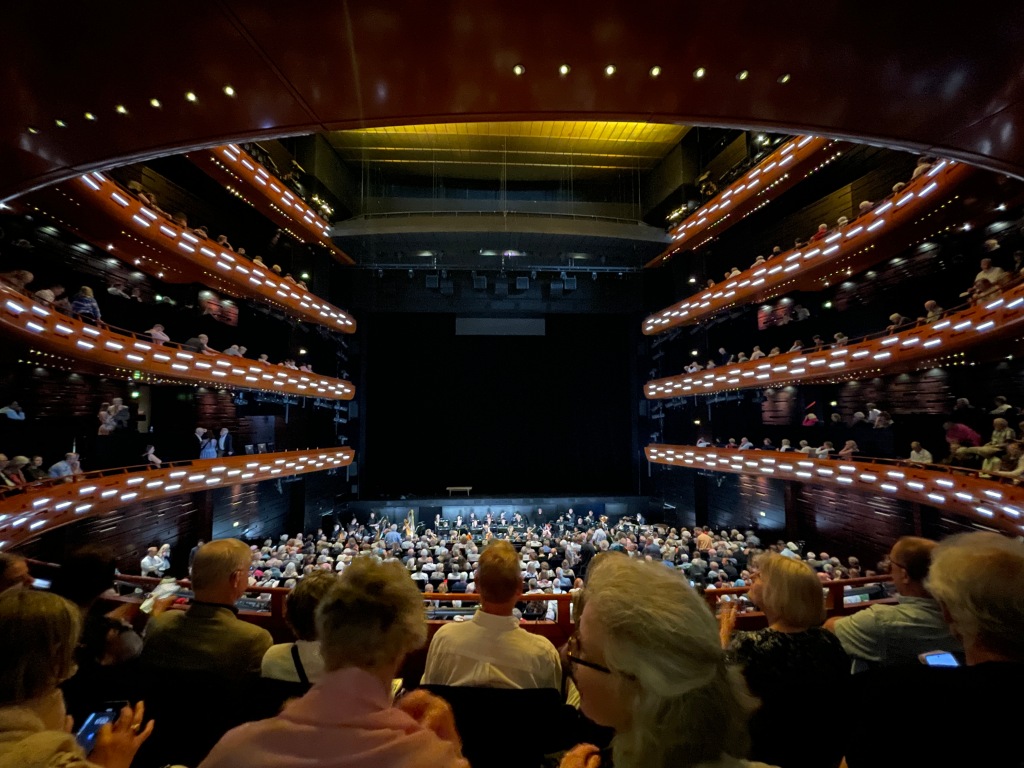
The auditorium was comfortable, despite the air being a little stuffy at first. The theatre architecture plays with perspectives: although the balconies are sloping down towards the stage it’s easy to read these as horizontal and the stage and orchestra pit as raked. There’s a disorientating array of materiality and colours of light: the slots in the maple balcony fronts are illuminated in a cold light that jumps around as you move your head (to my eyes, at least). The under-balcony lighting – small toplight spots – are pleasant but don’t sit easily with the warmer light bounced off the gold soffit. During the intervals the back wall of the stalls opens up so that daylight is borrowed from the foyer, but in limited quantity so that instead the effect makes the room feel dingy.
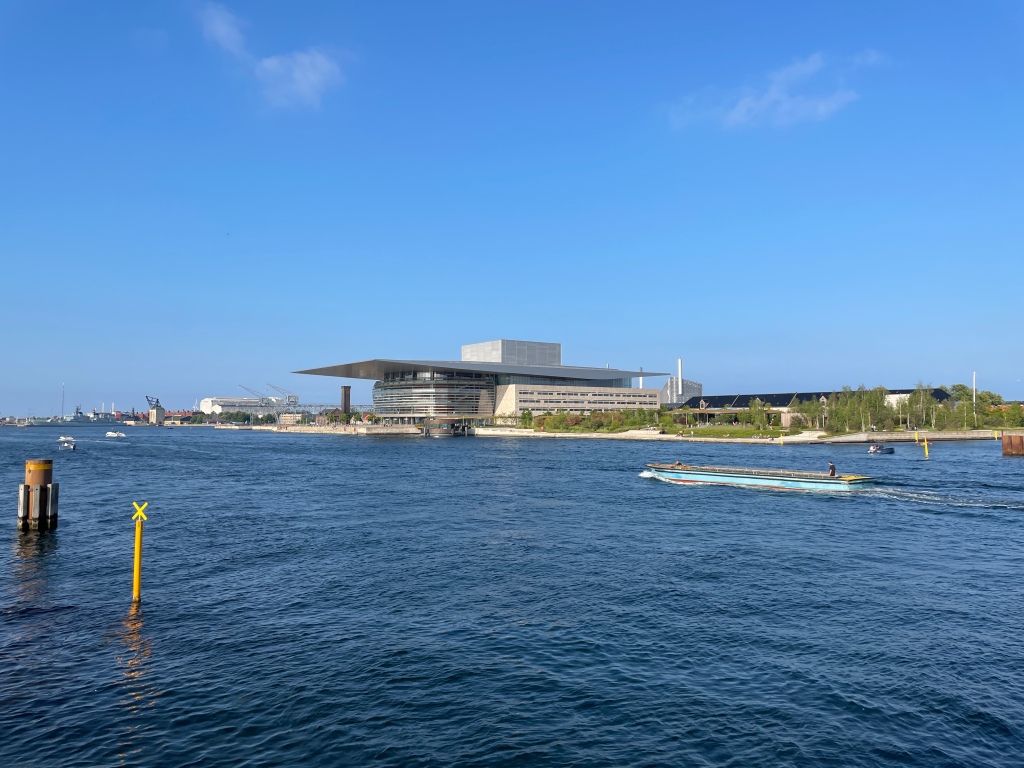
The opera house is on its own island, facing the harbour and the royal palace on the other side of the water. This means that it’s possible to arrive by ferry for the grandest arrival. But this also means that those arriving on foot from the city centre are greeted by the unglamorous backstage working end of the building. It surprised me quite how simple the foyer is, uncluttered by any gift shop or food outlets (it doesn’t even serve up a public wifi). This is, in many ways, an antithesis to trends seen in similar venues elsewhere for daytime activation and community engagement, and it makes the venue feel more purposeful, more consecrated, perhaps more elite. But there’s something refreshing in this simplicity. The layout is very legible, very navigable for audiences, and celebrates the outward views across the harbour. It also hosted a pre-show talk, in Danish, with the aim of providing some background to those unfamiliar with the opera.
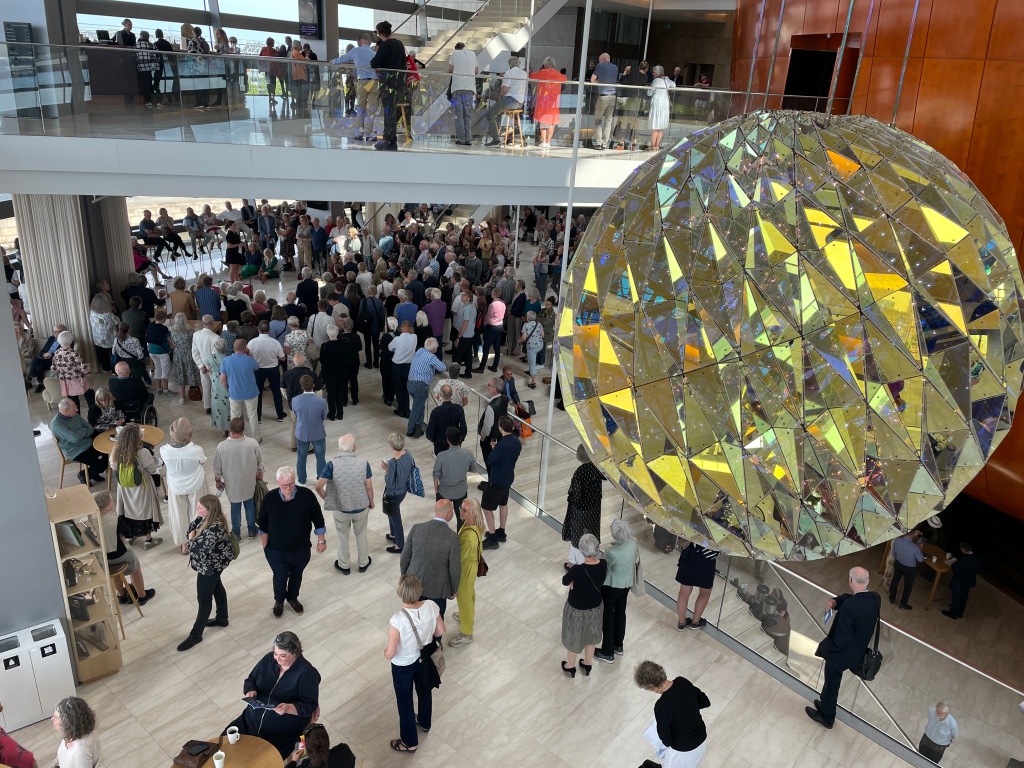
I later read that that there was serious disagreement throughout the project between architect Henning Larsen and the project funder, shipping magnate Mærsk Mc-Kinney Møller. The relationship was so acrimonious that Larsen ended up writing a book criticising the project after its inauguration in 2005. Nearly twenty years later their opera house is still a prominent part of the Copenhagen cityscape, and still one of the best-equipped opera houses in the world. It has a great programme. Sure, it has idiosyncrasies and as a modern temple to opera it feels a little anachronistic, but based on this visit it is a great-sounding room and attracts a devoted audience.
